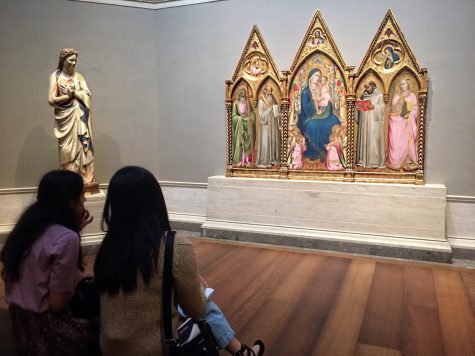Digging to Philosophical Art Essence
The philosophies of art facets in spiritual value, impacts of the social class, the unclothed body, and the color field.
Art is a concept of variation. With each color blend to careful indent brings a universal philosophy. The evolution of art itself grows from spiritual intimacy to contemporary originality. Following the fundamentals of art, it is common among art enthusiasts to observe heavier philosophical value than visual appeal. Through all work, philosophy stimulates the idea, and the idea cultivates the product.
Even from the earliest time periods, spiritual belief has always been an exceedingly significant aspect. The very pedestal of art is comprised of acknowledgement towards religion. Artists primarily worked to transfer spirit into artwork through illustrating their gods and deities. This often aided the regulation of societal behavior.
The towering social class controls culture. When social status comes to mind, wealth, occupations, and morals are considered. Especially in Italian art, artists capture the varying lifestyles of rich and poor; the peasants and the nobles. Peasants are often depicted inferior to the more wealthy, illustrating the swallowing establishments of retain.

Beauty in the unclothed body is incorporated in artwork from time to time, in renaissance as well as during the middle ages. Extracting nudity from its erotic stereotype, these time periods carried a perception of purity in the absence of clothing. The exposed human body symbolizes innocence in the oblivion of bad, freedom in having nothing to hide, and harmony of aesthetic.
One of the most extravagant forms of art is abstraction. From the spontaneous birth to the current contemporary creation, abstract art specializes in igniting thought. Chromatic colors are layered and manipulated to stir emotion and geometric structures are added as amplification to define intensity or detachedness.
As it is human nature to accomplish self expression, art has always carried a position in our rich history. It has come to question what art is truly defined as; through more than canvases outlined by a frame or sculpted material atop a podium. One can only piece together individual philosophies and remain in the mystery of constant contemplation. After all, without the ability to arouse thought, what would art be?

Welcome to the Oakton Outlook! This is my fourth year of writing for the school newspaper and my second year of being an Editor-in-Chief. We have an amazing...










